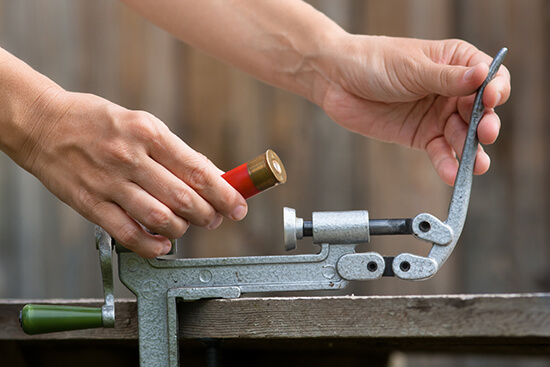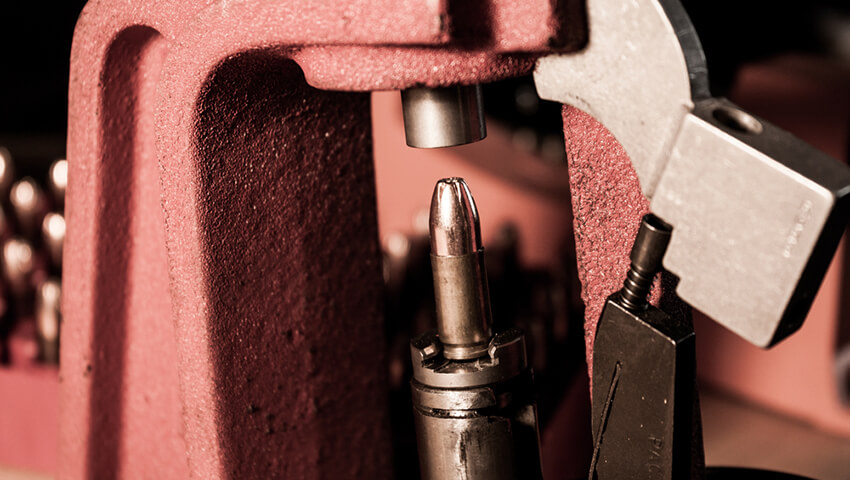Reloading Presses, Which One Is Right for You?
Reloading presses are a critical part of every reloading kit, and choosing the right one can make the difference between a life-changing hobby and a career in self-reliance. The reloading presses are used for reloading ammunition, can be found at a wide range of price points. Knowing what you want from a press will help you make the best choice.
11 Types of Reloading Presses That Will Help You Save Money and Improve Quality
With over two decades in the industry, a lot has changed since the first modern reloading presses were developed. Here are a few types to keep in mind for your next project:
- Single Stage Press
- Double Stage Press
- Triple Stage Press
- Semi-Automatic Press
- Semi-Automatic Hybrid Press
- Automatic Press
- Machine Press
- Press Builder
- Vertical Press
- Vertical Press Builder
- Custom Built Press
Different Types of Reloading Presses
Reloading Presses come in all different shapes and sizes, and this can be confusing to new hobbyists who are just starting to learn about the process. While there are some differences between models, they can be separated into two main categories: small-scale and large-scale. In the former category, small-scale presses often have a maximum weight capacity of around 100 pounds, while large-scale presses usually hold up to 1,000 pounds or more. Small-scale presses tend to be easier to use, but large-scale presses are often more powerful and thus allow the user to work with higher loads.
There are a lot of different kinds of reloading presses out there today, and each one is used in slightly different ways. Here’s how some of the different types of reloading presses work and what their purpose is in the reloading process:
Single-Stage Reloading Press
Single-stage presses are the most common type of reloading press in kits. They consist of a spring that pushes down on a plunger that holds the powder and bullet together. This is very simple and easy to use. These presses are the most common because they are inexpensive and they require little maintenance.
Some of the features that you can find in a single-stage press are:
- Good for beginners: The press is well-suited for a new reloader to begin learning how to make their own ammunition.
- Versatile: The most versatile, but it is slow.
- Multiple types of cases: This means can hold multiple types of cases, but will not hold the same size differently.
- Inexpensive: This means you can buy one relatively cheaply.
- Dies removal: No need to remove the dies before changing cartridges
- Easy to use: The press is the most common type of press, very easy to use, just press and load.
- Suitable: This press is most suitable for short barrel guns. It is a good choice for reloading your own ammunition in a short period of time.
- Accuracy: Better for accuracy
- Sturdy: Very sturdy, most popular, easy to learn, operate, and clean.
Advantage: Single-stage presses are also known as “single-stage auto-loading” presses. The main advantage of a single-stage press is that it is very easy to use and does not require any special knowledge. Also, a single-stage press doesn’t require any special tools for the loading process. It is an automatic press.
Disadvantages: The main disadvantages of single-stage presses are that they are slow to load and are more expensive to make. The single-stage press usually takes anywhere from 30 minutes to an hour to complete the reloading process. Another disadvantage of a single-stage press is that it requires a high degree of manual dexterity to load the cartridges. This can be an issue if you are reloading for long periods of time.
Turret Press
A turret press can be a great addition to your reloading equipment. They are typically used for high-capacity magazines. This type of press is a great way to save money and time when you are reloading your ammunition. You will also enjoy a quicker reloading process because the turret press is a single-stage machine.
A turret press works very much the same as a single-stage press, but with a little difference. The main difference is that this press can hold multiple dies. That means that a user can install a different size die in one of the loading stations.
Some of the features that you can find in a turret press are:
- High volume capability: This means that it can hold a lot of powder for loading cartridges.
- Multiple die configurations: This means that you can choose from different cartridge sizes.
- Variable speed: This means that you can adjust the speed at which the dies operate.
- Manual indexing: You can manually change the dies in a turret press without using any tools.
- Auto-indexing: You can also choose to have the turret press index automatically.
- Firing modes: You can choose from the following firing modes for your press: semi-automatic, fully automatic, and manually fired.
- Automatic priming: The turret press can automatically prime the primer pockets on all of the cases as you load them.
- High pressure: This means that high pressure can be used to fire the bullets.
Advantage: The main advantage of using a turret press is that it can help you to speed up the process of reloading. This is a great way to save money when reloading, especially if you can do the whole job in one shot. This is true because it is not necessary to go to the trouble of setting the primer, seating the bullet, etc. In addition, the turret press can be used to make better quality ammo. Turret presses can also be good for reloading large numbers of rounds.
Disadvantage: The disadvantage is that the press is slower.
Progressive Reloading Press
A progressive reloading press is a press that can reload multiple rounds simultaneously. It uses hydraulic pressure, so the tighter the case gets, the more force it takes to compress it. A progressive press is much more efficient than manual or semiautomatic presses and it produces more consistent ammo. When you reload ammo for a particular gun or caliber, you need to consider what kind of bullet you are going to use.
The most important thing about a progressive press is that you have to understand how it works. A progressive press can be made up of many different components. Some of the major parts of a progressive press are the base or frame, the ram, the shell-plate, the safety and trigger, and the case feeder. All of these parts are designed to work together. It is essential that you learn about all of the parts of a progressive press, as well as, how they function.
A progressive press is a very useful tool for reloading. It can be used to reload a variety of different calibers including 2.62x39mm (3.62 NATO), .30-06, .308 Winchester, .45 ACP, 9x19mm (9mm Luger), .40 S&W and.223 Remington (4.56 NATO). These are popular calibers because they are used by a lot of different firearms such as handguns, assault rifles, and sniper rifles. You can also reload.22 LR,.32 ACP, .380 Auto, .38 Special, 9mm Luger, 10mm Auto, and other smaller caliber ammunition.
Some of the features that you can find in a progressive press are:
- Auto-indexing: When auto-indexing progressive presses, the shell-plate indexes from the base up to the head. The head indexes down to the base, creating a finished cartridge.
- Manually indexing: When manually indexing progressive presses, the shell-plate indexes down to the head, while the ram index up to the base to create a completed cartridge.
- Save time: For high-volume users, progressive presses can save significant time compared to manual presses.
- Two hands to operation: A progressive press requires two hands to operate – one to hold the base of the ram, while the other hand is loaded with the bullets.
- Automatic: Many progressive presses feature a magazine feed system, which automatically loads each round from the magazine, and places it on the ram for subsequent rounds.
- Semi-auto operations: Progressive presses can be easily modified for semi-auto operations.
- Multi-mode operation: A progressive press may be used with single-stage or turret-type presses for larger calibers.
- High volume capability: Some progressive presses are capable of loading as many as 200 rounds per minute.
Advantage: The main advantage is that you don’t have to take multiple reloads to complete your magazine. Another important advantage is that when you are done with your shooting session, you don’t have to clean up the parts of the press that were in use. Most progressive presses have a simple design and are very user-friendly. This is great for people who don’t have much experience in using presses. Also, the technology is advanced enough so that you don’t need any special training to use one. You just have to press the button.
Disadvantage: The disadvantage to a progressive press is that you can really only do one thing at a time. You can’t add another cartridge or start the process on a second press until the first one is done. Also, when you have a large batch of cases, the process can take a long time, so if the first batch doesn’t come outright, you have to wait until all the cases are finished to start the next group.
Hand Reloading Press
Hand reloading presses are great for reloading small quantities. They are convenient because you can use them to reload your handgun at home, or even use them at the range. They are also very economical since you don’t have to buy a separate bench and can reload your ammunition with the help of a good hand press.

Some of the features that you can find in a hand press are:
- You don’t need a dedicated benchtop reloading machine to reload with a hand press.
- With a hand press, you don’t need a bench to reload your ammunition.
- Hand presses can be loaded with large-caliber rounds such as.
- Hand presses are not as accurate as dedicated reloading machines.
- It takes longer to reload a bullet with a hand press.
- Hand presses are easy to use.
- Hand presses are not suitable for large capacity reloading.
- Hand presses are cheaper than dedicated reloading machines.
- Hand presses are portable and can be used almost anywhere.
Advantage: The advantage of a hand press is that you can take it anywhere, unlike a bench press, which needs to be mounted on a bench. However, you may have to put up with a few inconveniences. For example, the hand press may not be strong enough to handle heavy cases. You’ll also have to be careful if you are reloading in an apartment or house because the hand press may not be able to fit through the door. It is best to have a bench reloading press so you don’t have to worry about those problems.
Disadvantage: There are a number of disadvantages to hand-reloading ammunition for your weapon. Most notably, handloading can be time-consuming and frustrating. But the biggest disadvantage of handloading may be the accuracy. In addition to being time-consuming, reloading ammunition from a hand-loader can be inconsistent and less accurate than reloading from a machine.
The Hand Reloading Press has to be used carefully and with caution, as it can cause serious injury if you don’t follow proper safety procedures. If you’re planning to use this device, then you should definitely take precautions.
In conclusion, reloading is a great hobby for those who like guns and reloading, whether you’re looking for a hobby or a career in reloading. If you are interested in learning more about the process of reloading, I recommend checking out this article on Types of Reloading Presses. The different types of reloading presses and their uses are discussed in the article.

